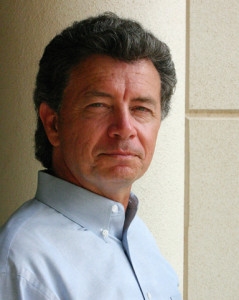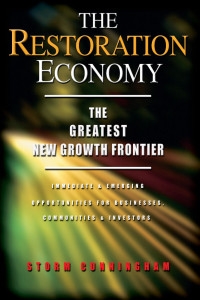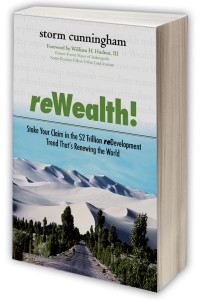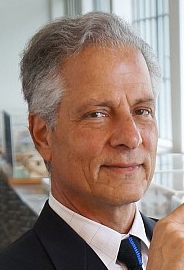If you look at the current set of hot topics in urban redevelopment, you’ll find that issues such as mass transit, walkability, sustainability and mixed-use spaces are front-and-centre. While such matters certainly have a significant impact on a city’s livability, they don’t really address what many feel is a far more important subject: the actual happiness of city residents.
There’s no better way to rekindle the soul of a city than to make it a happier place to live, work and play. But what makes for a happy city? What specific things can cities do to make them more vibrant places that people genuinely enjoy? And how can these ideas be put into action?
The work of leading theorists and urban revitalizers including Storm Cunningham, Andr?s Duany, Charles Montgomery, and Guillermo (Gil) Pe?alosa offers many intriguing clues. According to these thought leaders, economic and social capital must be carefully cultivated and properly leveraged to create the kind of atmosphere that truly improves the spirit of a city and the people who live in it.

Storm Cunningham and the “Restoration Economy”
Storm Cunningham is among the world’s leading community revitalization theorists. He has published two highly influential books on the topic: 2002’s The Restoration Economy and the 2008 follow-up, reWealth. His intricate and compelling ideas can be boiled down to one central, unifying principle: outmoded and discredited urban development practices must be jettisoned in favour of sustainable, forward-looking alternatives that take a long-term view and focus on community restoration.

 According to Cunningham, municipal leaders have long been programmed to do whatever it takes to draw employers to their cities, hoping that the resultant influx of jobs will then have a trickle-down effect and improve overall quality of life. Cunningham believes that this approach is fundamentally flawed. In an interview with urban journalist Michael Scott, Cunningham said, “If one looks at the truly great ‘back-from-the-dead’ stories, we see the opposite strategy at work. Communities that have perpetuated their revitalization for a decade or more focused on improved quality of life first. This attracted high-quality employers that wanted to be there, who didn’t pull up stakes as soon as the freebies ran out. That doesn’t mean that tax incentives aren’t a useful tool, but they shouldn’t be the only tool, and they certainly should not comprise the heart of their strategy.”
According to Cunningham, municipal leaders have long been programmed to do whatever it takes to draw employers to their cities, hoping that the resultant influx of jobs will then have a trickle-down effect and improve overall quality of life. Cunningham believes that this approach is fundamentally flawed. In an interview with urban journalist Michael Scott, Cunningham said, “If one looks at the truly great ‘back-from-the-dead’ stories, we see the opposite strategy at work. Communities that have perpetuated their revitalization for a decade or more focused on improved quality of life first. This attracted high-quality employers that wanted to be there, who didn’t pull up stakes as soon as the freebies ran out. That doesn’t mean that tax incentives aren’t a useful tool, but they shouldn’t be the only tool, and they certainly should not comprise the heart of their strategy.”
So, what is the better path? Cunningham advocates what he calls “renewal partnerships,” in which the public and private sectors cooperate to renew existing municipal assets. He outlines three golden rules of renewal partnerships.
First, they must use assets already in place to generate new wealth; this keeps urban sprawl in check. Second, they must use an integration-based strategy that draws on existing socioeconomic resources instead of looking outside the city to attract new resources. Finally, they must engage all stakeholders—everyone who’s involved in or affected by the project should contribute in some way.
 Andr?s Duany and New Urbanism
Andr?s Duany and New Urbanism
Andr?s Duany is a central figure in a movement known as “new urbanism.” The fundamental tenets of new urbanism include the creation of enduring neighbourhoods, the prioritization of shared spaces, the reclamation of outmoded assets and the importance of social connections.
In Duany’s new urbanism, “enduring neighbourhoods” are those which have what he calls a “human scale.” Walkability is key, for numerous reasons. First, walkable neighbourhoods are inherently more sustainable. Second, walking promotes interaction with other residents. According to Duany and many other theorists, there is a positive correlation between human interaction and happiness, even if the interactions themselves are fleeting and impersonal. In other words, people are happier when they’re around other people, regardless of the degree to which they may intermingle with one another.
Duany seeks to put that principle to work through the creation of shared spaces. In addition to tried-and-true shared-space standards like parks and squares, new urbanism posits that sidewalks, storefronts, caf?s, porches and rooftops can all be used to facilitate human interactivity. When it comes to urban redevelopment, Duany believes that these principles should be applied to what he calls “reclaimed places” whenever possible. Abandoned buildings and empty commercial sites can be refashioned into mixed-use, mixed-income neighbourhoods, promoting greater levels of social harmony and a stronger sense of community.
” title=”
" title="